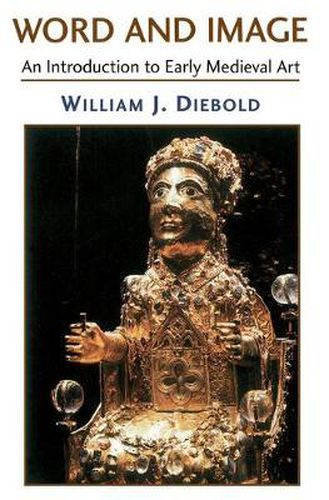Readings Newsletter
Become a Readings Member to make your shopping experience even easier.
Sign in or sign up for free!
You’re not far away from qualifying for FREE standard shipping within Australia
You’ve qualified for FREE standard shipping within Australia
The cart is loading…






This up-to-date, reliable introductory account and interpretation of early medieval art combines art, history, and ideas from around 600 to 1050. Diebold describes diversity and complexity of early medieval art by examining the relationship of word and image. The concept of word and image is broad enough to encompass the Anglo-Saxon art and oral culture of the Sutton Hoo treasure, as well as the literate art of the Carolingian and Ottonian courts. Diebold describes and explains the stunning variety of early medieval objects- illustrated manuscripts, rich metal work, ivories, textiles, statuary, jewels, painting and architecture produced north of the Alps beginning with Pope Gregory’s Christianization of England and his justification of images, and ending with the spectacular gold reliquary statue of Ste. Foy at Conques, which separates Early Medieval art from the Romanesque. Diebold also discusses the function of (and audience for) medieval art he shows why, how, and for whom it was made. Diebold outlines the role of artists and patrons in medieval society, and he explains art’s institutional and social status. He defines basic historical and art-historical terms and concepts as they are encountered, and illustrations, a map, a glossary, notes, suggestions for further reading, and an index are included.
$9.00 standard shipping within Australia
FREE standard shipping within Australia for orders over $100.00
Express & International shipping calculated at checkout
This up-to-date, reliable introductory account and interpretation of early medieval art combines art, history, and ideas from around 600 to 1050. Diebold describes diversity and complexity of early medieval art by examining the relationship of word and image. The concept of word and image is broad enough to encompass the Anglo-Saxon art and oral culture of the Sutton Hoo treasure, as well as the literate art of the Carolingian and Ottonian courts. Diebold describes and explains the stunning variety of early medieval objects- illustrated manuscripts, rich metal work, ivories, textiles, statuary, jewels, painting and architecture produced north of the Alps beginning with Pope Gregory’s Christianization of England and his justification of images, and ending with the spectacular gold reliquary statue of Ste. Foy at Conques, which separates Early Medieval art from the Romanesque. Diebold also discusses the function of (and audience for) medieval art he shows why, how, and for whom it was made. Diebold outlines the role of artists and patrons in medieval society, and he explains art’s institutional and social status. He defines basic historical and art-historical terms and concepts as they are encountered, and illustrations, a map, a glossary, notes, suggestions for further reading, and an index are included.